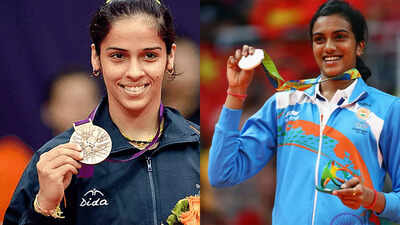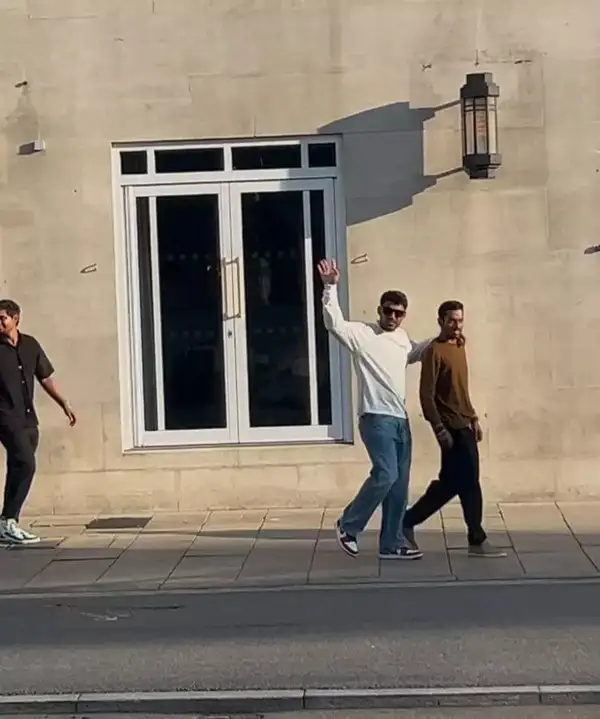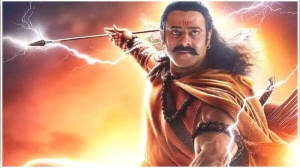India's performance in badminton, once a source of national pride and consistent achievement, is currently facing a concerning decline. After a decade and a half of establishing itself alongside cricket as a prominent sport in India, badminton is now experiencing a period of poor results, raising serious questions about the future. The absence of successors to the celebrated Saina Nehwal and PV Sindhu further exacerbates the situation. Nehwal, a pioneering figure now 35, and Sindhu, the 29-year-old double Olympic medalist, are struggling to overcome initial challenges.

From securing three consecutive Olympic medals in women’s singles and achieving milestones such as winning the Thomas Cup in 2022 and the Asian Games men’s doubles gold in 2023, India's badminton fortunes have taken a significant downturn. The recent All England tournament in 2025 saw no Indian player reach the semifinals, highlighting the depth of the current slump.
With the exception of Satwiksairaj Rankireddy and Chirag Shetty, and to some extent Lakshya Sen, many Indian players are not performing at their peak. The era when names like Saina Nehwal, PV Sindhu, Kidambi Srikanth, Sai Praneeth, HS Prannoy, and Satwik-Chirag were considered tournament favorites seems like a distant memory.
The decline has been evident for some time. Since HS Prannoy’s Malaysia Open Super-500 title in January 2023, Indian players have struggled to secure singles titles, with only the doubles pair of Satwik-Chirag managing to win a few. India's performance at the Sudirman Cup earlier this year was particularly disappointing, as they were eliminated in the group stage after losing to Denmark and Indonesia.
The success of Indian badminton in the past decade was built on the achievements of both men and women. Following Saina Nehwal’s Olympic bronze at the London Games, PV Sindhu emerged as a prominent force, winning a bronze at the World Championships in 2013. Alongside Saina and Sindhu, players like Parupalli Kashyap, Kidambi Srikanth, Prannoy, and B Sai Praneeth gained recognition in the men’s division. Srikanth even reached the World No. 1 ranking and won four Super Series titles in 2017. Sindhu's World Championship title in 2019 and Sai Praneeth's bronze in the same year further solidified India's position in the sport.
While Srikanth showed glimpses of his old form by reaching the final of the Malaysia Masters, his low ranking prevented him from participating in subsequent tournaments. The Satwik-Chirag pair, who made a mark in men’s doubles, have also faced fitness issues and are yet to reach a final this year. The responsibility to lead the men’s singles challenge now falls on Lakshya Sen. Despite his potential, Sen has only won two Super-500 titles, and the wait for a Super-750 or Super-1000 title continues.
The women’s scene is even more concerning, with no clear contender to lead the Indian challenge. The younger players have not yet reached the standards set by Saina and Sindhu. Malvika Bansod, Aakarshi Kashyap, Unnati Hooda, Anmol Kharb, and Tanvi Patri are among those trying to fill the void, but with limited success.
One of the primary reasons for the decline is the lack of a robust system to consistently produce high-caliber players. Unlike countries like China and Malaysia, India lacks a well-structured feeder system. Despite Saina and Sindhu inspiring many youngsters, there are not enough trained coaches to nurture them. Additionally, existing coaches have not been adequately trained to meet the growing demand.
To revive Indian badminton, identifying and grooming a core group of emerging players is essential. These players should be divided into elite and developing groups to foster competition. Talented players like Malvika, Aakarshi, and Tanvi could benefit from being brought together and trained under a unified system. However, a lack of foresight has widened the gap between elite and emerging players.
There is a perceived lack of adequate support for promising junior and sub-junior players. Sanjay Mishra, the secretary of the Badminton Association of India (BAI), acknowledged the setbacks due to injuries to key players and the time required for the next generation to develop.
Mishra stated that BAI is focused on enhancing coaching, injury management, and talent development. He also mentioned the National Centre of Excellence, guided by coach Ivan Sozonov and coach Park, as a key initiative to nurture the next generation of champions.
At its recent annual general meeting, BAI unveiled a plan to drive the growth of badminton. While the plan includes several provisions, greater emphasis should be placed on grooming coaches. A structured coaching system with different categories for identifying, training, and developing talent is crucial.
To improve Indian badminton’s standing, a comprehensive system with a clear three to five-year plan is essential. The association and coaches should collaborate to determine the tournament schedules for top shuttlers, especially during Olympic and Asian Games years. Implementing a system similar to the one used by Pullela Gopichand could yield positive results across the country. While talent exists, a proper system must be implemented to prevent further decline.
Newer articles
Older articles
 Team India Settles in Birmingham: Rahul's Mattress, Coaches' Strolls, and the Enduring Coffee Ritual
Team India Settles in Birmingham: Rahul's Mattress, Coaches' Strolls, and the Enduring Coffee Ritual
 Android Users Urged to Patch Devices Immediately Following Critical Security Flaws Alert
Android Users Urged to Patch Devices Immediately Following Critical Security Flaws Alert
 Ashada Gupt Navratri 2025: Dates, Auspicious Timings, and Esoteric Significance Explained
Ashada Gupt Navratri 2025: Dates, Auspicious Timings, and Esoteric Significance Explained
 JPG to PDF: A Graphic Designer's Guide to Conversion & Best Practices
JPG to PDF: A Graphic Designer's Guide to Conversion & Best Practices
 Skin Cancer Alert: How to Identify Suspicious Moles and Early Warning Signs
Skin Cancer Alert: How to Identify Suspicious Moles and Early Warning Signs
 IRCTC's AskDisha 2.0: AI Chatbot Streamlines Train Ticket Booking, Refunds, and Travel Information
IRCTC's AskDisha 2.0: AI Chatbot Streamlines Train Ticket Booking, Refunds, and Travel Information
 The stat that could swing every NBA team's 2025-26 season
The stat that could swing every NBA team's 2025-26 season
 Bollywood's Mythological Muse: How Indian Epics Inspire Cinematic Storytelling
Bollywood's Mythological Muse: How Indian Epics Inspire Cinematic Storytelling
 Bollywood Flashback: Jackie Shroff Accused of Untoward Advance on Young Tabu at Danny Denzongpa's Party
Bollywood Flashback: Jackie Shroff Accused of Untoward Advance on Young Tabu at Danny Denzongpa's Party
 Popular Finance YouTuber's Account Hacked: Bitcoin Scam Alert and Security Tips
Popular Finance YouTuber's Account Hacked: Bitcoin Scam Alert and Security Tips